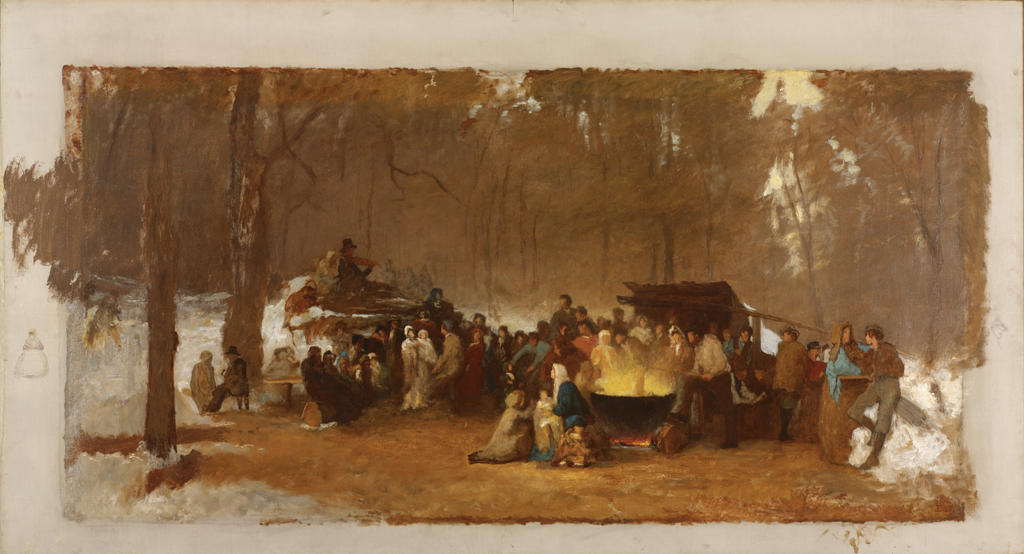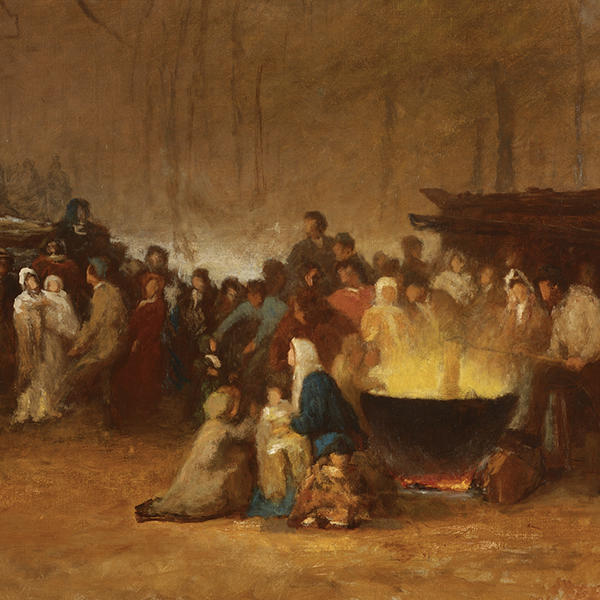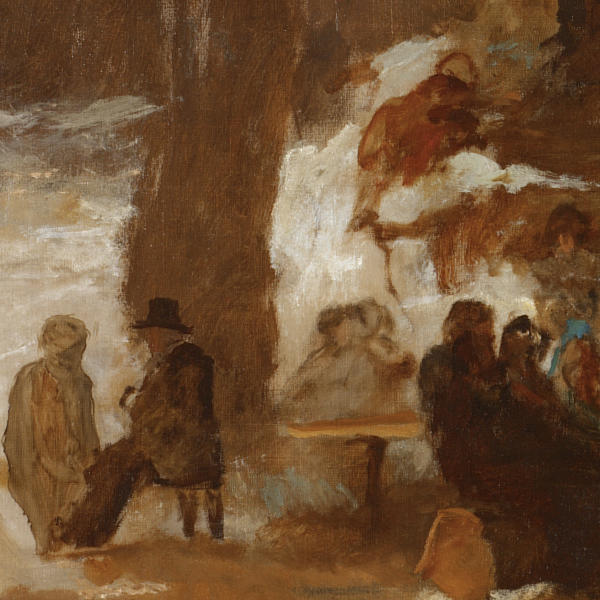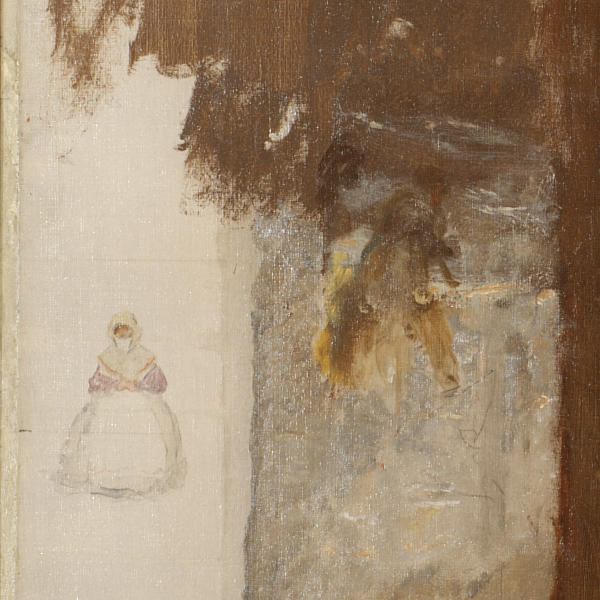Eastman Johnson’s Sugaring Off, ca. 1861–1866, is a lively chronicle of maple-sap harvesting in Fryeburg, Maine. Rendered on the grand scale of a history painting, the sprawling view of a communal New England event is the largest in a series that Johnson began in the early 1860s. Although he never exhibited this painting publicly, he would have shown it to prospective clients who came to his studio to view works in progress and, ideally, place orders for commissions.
By 1860, Johnson was widely admired for his scenes of American life. Like other 19th-century American artists, he had started out as an apprentice to a lithographer, perfecting his drawing by copying the designs of others onto printers’ stones. He quickly developed a talent for portraits in chalk and crayon, but in 1849, lacking advanced training in color and composition, he embarked on six years of study abroad. Beginning in Düsseldorf, where he learned pictorial organization, he then proceeded to the Hague to study the brushwork and dramatic lighting effects of the Dutch Old Masters. When he finally arrived at the studio of Thomas Couture in Paris, he found himself in the midst of a revolution that affected the subject matter and practice of painting.
Challenging academic traditions of drawing and modeling, Couture advocated reliance on preparatory oil sketches. Students were instructed to quickly lay in light tones against a “sauce” of reddish brown underpainting, and to preserve the spontaneity of the sketch in the finished work. Couture’s methods influenced a new generation of realist painters, including Americans who observed them firsthand or read his published studio practices.
Johnson illustrates Couture’s lessons in Sugaring Off by blocking in his background with a broad brown wash, then bringing his figures forward with strokes of brilliant color that provide enough detail to distinguish their characters. At this stage, the painting offers the sensation of the dress rehearsal of a great American opera whose cast has assembled in anticipation of a precisely choreographed performance. A loosely painted wooded setting creates the backdrop, while in the exposed margins of the canvas Johnson’s little oil sketches and pencil drawings suggest understudies in alternate poses. The result is a rare glimpse at Johnson’s creative process, informed by a new way of constructing a painting that would have been invisible to the viewer once Johnson applied the final stages of finish.
Maureen C. O’Brien
Curator of Painting and Sculpture




